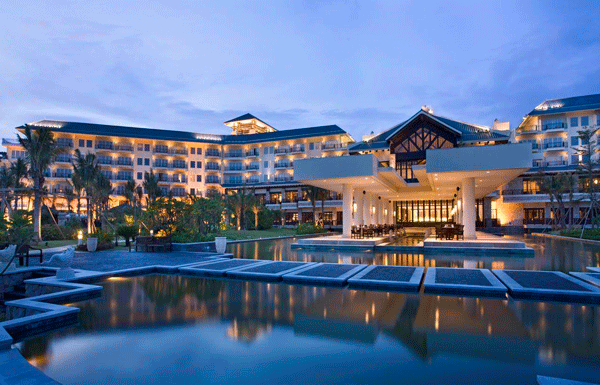✕

Column: industry Tag: Marriott,Marriott International,loyalty program Published: 2017-11-10 11:03 Source: Author:

BETHESDA, Maryland—Marriott International officials have long held the power of a unified loyalty platform was one of the most appealing aspects of the company’s acquisition of Starwood Hotels & Resorts Worldwide, and executives said they’re on track to finally offer a single loyalty program at some point in 2018.
Speaking during the company’s third-quarter earnings call with investors and analysts, EVP and CFO Leeny Oberg said the primary obstacle to merging Marriott Rewards and Starwood Preferred Guest are existing agreements with third parties.
“To be able to fully unify our loyalty program, we need to work it out with both our credit card partners as well as our timeshare partners,” she said. “We are in the process of doing that right now and are hopeful we’ll get there soon.”
Marriott?President and CEO Arne Sorenson said there’s been enough progress to say the company’s original projection of a 2018 merger remains in place, even if that isn’t set in stone. He noted that the company’s loyalty offerings continue to be a strength.
“We continue to see the roomnights coming from our loyalty program are continuing to increase, approaching 55%,” he said. “That’s a powerful thing.”
Also on the loyalty front, Sorenson said the company is tweaking its loyalty redemption formulas to discourage properties dropping rates.
“We’ve already made some changes so that hotel owners have less incentive to drop rates at the last minute in order to meet the high occupancy redemption formulas that exist, or historically have existed, both in our platform and in many of our competitors’ platforms,” he said.
Sorenson said he is hopeful those changes, along with the creation of a 48-hour cancellation window, will boost properties’ abilities to drive rate. He said that’s important in the current distribution environment.
“We live in a world of radical transparency in pricing, where prices are available for essentially every hotel in an instant,” he said. “We are doing everything we can.”
Asset disposition
Oberg said the company has already sold off roughly $1.1 billion in owned assets acquired through the Starwood deal, as the company works toward a goal of $1.5 billion in dispositions. She said she is confident Marriott can achieve the remaining $400 million in sales in 2018, but there likely won’t be more deals before the end of the current year.
Oberg said there are more sales that could come after the next $400 million as well.
“We still believe (the next round of sales) will leave us a handful (of properties) that—because of the dynamics in their particular markets, be it Rio or Aberdeen, Scotland—that we may need to wait a little while,” she said. “But with the $400 million related to 2018, we feel good.”
Reshaping of Sheraton
During the call, Sorenson noted the company has recently seen a higher-than-usual number of rooms and properties being removed from its system, and he attributed that to an effort to cull the lowest-quality rooms from the Sheraton brand.
“We have launched a full-court press to improve the Sheraton brand,” he said. “We are working to increase accountability, quality assurance and capital investments while applying Marriott’s systems and programs to drive the top line and reduce costs. These are still early days, but we believe we are making real progress and owners are noticing.”
He pointed to the number of new signings for the brand—3,500 rooms across the globe in the past 12 months—as evidence that the ownership/development community seems to be buying in to the progress Sheraton is making.
New brand possibilities
When asked whether Marriott would be interested in following its competitors’ forays into the midscale segment, Sorenson said that doesn’t seem to be in the plans for the time being. But he acknowledged the company doesn’t have a presence in the space and is “more dramatically skewed to luxury and upper upscale and even upscale” hotels.
“We want to continue to be very strong on the higher end of the market,” he said. “That doesn’t mean we’re going to ignore those suburban or secondary markets, but we want very much for our brands to be playing in the place where people are most inspired by travel and where they have the strongest memories—and coincidentally where we can get the most profit contribution per room.”
Q3 earnings results
For Q3 2017, Marriott Hotels saw a 2.1% year-over-year increase in revenue per available room across the globe to $120.22, slightly beating the high-end of Marriott’s forecasts, which was 2%. The growth numbers were more muted in North America, where RevPAR grew just 0.4% to $122.69.
After a strong Q3, Marriott officials have revised their full-year 2017 RevPAR growth guidance up from 1% to 3% to between 2% and 3%.
As of press time, Marriott’s stock was trading at $119.98 per share, a year-to-date increase of 45.1%. The Baird/STR Hotel Stock Index is up 33.6% for the same period.
Previous:STR: US hotel results for week ending 4 November
Next:HPT to buy more conservatively, focus on renovations
Hot key words
Hot Products
Popular Vendors